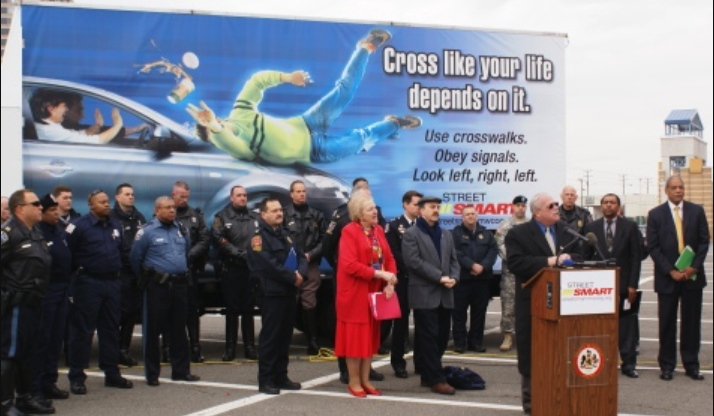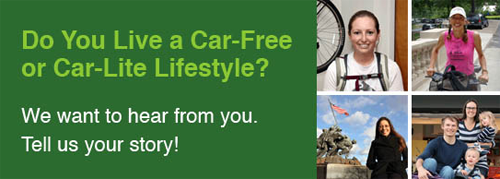Here’s why positive storytelling matters to transportation

Image by Joe Flood licensed under Creative Commons.
This story was first published on June 23, 2015.
Better streets, transit lines, and bike lanes are wonderful things. But for communities hoping to kick the car habit, good marketing and public relations matter just as much as the infrastructure itself.
At StreetsCamp in 2015, Mobility Lab’s Paul Mackie taught us why marketing is crucial, and how to do it right.
Talking advertising at #streetscamp: Car ads don't show congestion, they show 1 driver on an open road. What's the transit equivalent?
— BeyondDC (@beyonddc) June 20, 2015
Once upon a time, we walked
Once upon a time, there was an easy, cheap, and effective way to travel around cities. It was called walking. And then about 100 years ago one of the most effective public-relations campaigns in the history of mankind convinced everyone that streets belong to cars, and walking is dangerous.
Perception became reality, and a century later we’re still dealing with the consequences:
Does that ad make you want to walk safely? No. It makes you want to drive. Chalk one up for unintended consequences.
Here’s another example:
When “See something, say something” is the only transit message you hear, that's not positive. Doesn't make people want to ride #streetscamp
— BeyondDC (@beyonddc) June 20, 2015
It doesn’t have to be that way. Here’s Mackie’s straightforward rule for doing it right:
Find positive, personal stories to tell when pitching transportation #Streetscamp
— Jared Alves (@JAlves6) June 20, 2015
What kind of “positive, personal stories?” How about Arlington’s Car-Free Diet campaign:
You can even be positive while talking about safety, like in Arlington’s Be a PAL campaign.
Image from Arlington County.
Once you’ve got a story to tell, how do you get it out there? Mackie has a guide for that too:
A roadmap to #transit storytelling that won't break the bank #streetscamp @MobilityLabTeam pic.twitter.com/8e8iCBNgCR
— ThePlangineer (@ThePlangineer) June 20, 2015
Following that guide is part of Mobility Lab’s formula for success. And yes, it works. It really works: It takes 40,900 cars off Arlington’s roads every day.
This is what Arlington's TDM agency accomplishes, with no infrastructure. Equivalent of a major highway. #streetscamp pic.twitter.com/LUsrF9fh7h
— BeyondDC (@beyonddc) June 20, 2015
 Cross-posted at BeyondDC.
Cross-posted at BeyondDC.



